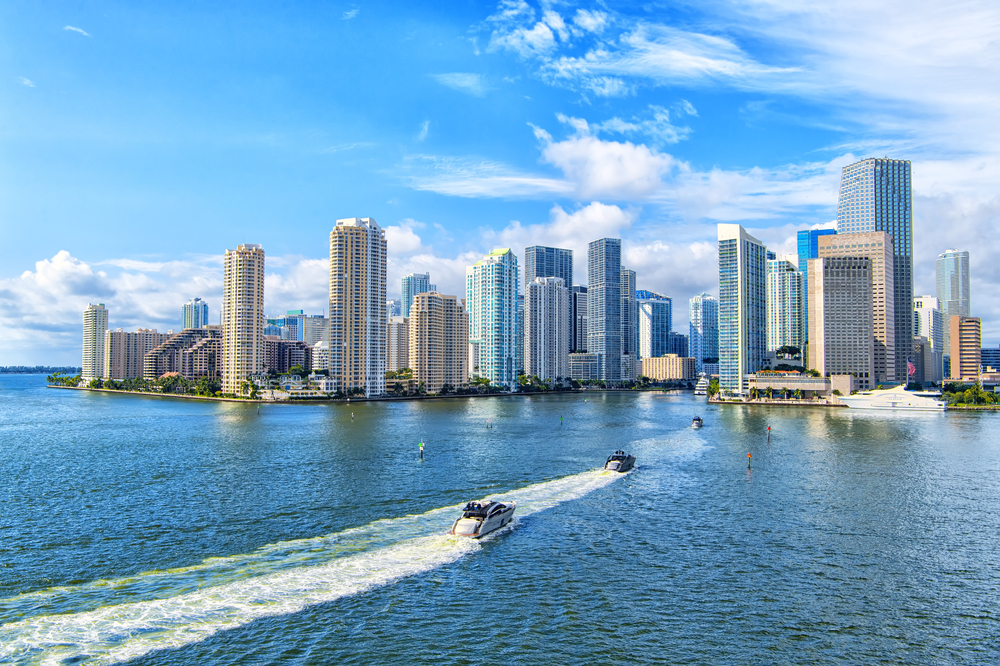Ohio, The Buckeye State, is shaped by both Lake Erie and the Ohio River. The state boasts an appealing combination of interesting cities, pristine natural scenery, and charming farms. While major cities like Cleveland, Columbus, and Cincinnati are among the best places to visit in Ohio.
Ohio is the 34th largest by area, the 7th most populous, and the 10th most densely populated of the 50 United States. The state’s capital and largest city is Columbus. The state takes its name from the Ohio River.
As the birthplace of aviation, several amazing cities, and a growing economy, Ohio is an u.nderrated gem of a state. It offers a cheap cost of living, four beautiful seasons, and Midwestern charm. These attractive attributes draw folks of all ages and backgrounds to live in Ohio. If you’re looking for a great place to build your career, raise a family, or retire, the “Heart of it All” is a prime central location.
Living in Ohio can be especially convenient for business and travel. The state is a day’s drive to within 50% of the population in the continental US. With 11,718,500 million residents, Ohio is the 10th most densely populated state but has one of the lowest growth rates of all states. At 44,825 square miles, Ohio is the 34th largest state in the country.
Considering a move to Ohio? We’re here to help. There are a lot of things you’ll need to know before moving to Ohio. Luckily, you’ve come to the right place.
Here are a few pros and cons to consider as you make your move to The Buckeye State:
Ohioans know that at the most basic level, people make the economy. And the economy is only as strong as the people who make it run, by buying, selling, and — most of all — working. Job growth was already slowing down before COVID-19 hit. Many jobs paid far less than what families need to make ends meet, and less than the same job paid two decades ago.
A record 22,176 new businesses were created in Ohio in April 2021, 93.7% higher than in April 2020. Ohio is about to see a hiring boom. The state has enticed several global companies to invest more than $606 million and create more than 3,000 new jobs. The Greater Cincinnati and Northern Kentucky African American Chamber of Commerce is launching a program called “PIVOT”, designed to provide recovery strategies and technical assistance to businesses emerging from the pandemic. Greater Cleveland Partnership and Wright Brothers Institute have agreed to work to connect local businesses with the institute’s connections at the Air Force Research Laboratory in Dayton.
Ohio embraced Opportunity Zones early to become one of the first states to pair a complementary tax credit with the federal incentive to encourage Ohio-based investors to invest locally. Together, the two incentives have moved at least $453.4 million in OZ equity capital over the course of the state’s 2020 and 2021 budget years thus far. The average OZ receiving investment had a 35% poverty rate and a more diverse population than the state as a whole. In total, over 350 entities invested in at least 215 distinct developments or businesses across 72 census tracts and 18 counties, with the median investor contributing $201,460.
Ohio is ranked the 10th best overall city of its size for traffic. Breakdown of driving subcategories: 7th best for the cost of ownership & maintenance, 29th best for traffic & infrastructure, 36th best for safety, and 8th best for access to vehicles & maintenance. Cyclists can enjoy the well-developed bicycle route network, many of which follow rail trails.
Primary Interstate highways: Interstate 70 runs west to Indianapolis and east to Pittsburgh, Interstate 71 runs southwest to Cincinnati and northeast to Cleveland, Interstate 75 runs north from Dayton to Toledo and up to Detroit, Michigan. Interstate 77 runs north-south in the eastern part of the state from Akron to Charleston, Interstate 90 runs east-west just south of Lake Erie, connecting Toledo in the west to Buffalo, NY in the east.
Upon consideration of the average median value of homes in Ohio, ($162,933, according to Zillow), it is safe to say that home ownership in Ohio is more affordable than most other states. This means that you would be paying roughly $140,700 in Ohio, while in different parts of the nation the same house could cost approximately $231,200.
However, do keep in mind these are just rough figures. If you choose to stay in a bustling city like Cincinnati, the median value of homes is $179,685 which is even higher than the state average.
When it comes to matters of groceries, the funds you’ll spend is almost en par with the national average. However, utilities are 22% cheaper than other states. For instance, the average gas bill is $65 and electricity bill is $97. Along with cable, internet and water total costs could round up to $447-$550/month.
To live comfortably in Ohio, the median household income requirement is $54,533 (according to Niche). Once again this is just to give you a price point. Depending on your lifestyle choices and the way you prefer spending your income.
Moving is one of the most exciting and overwhelming events in our lives. While there are many moving companies and various different resources to choose from, there is only one Real Movers. If you are in the process of planning a long-distance move, and you are looking for a moving company you can trust, Real Movers is your perfect choice.















